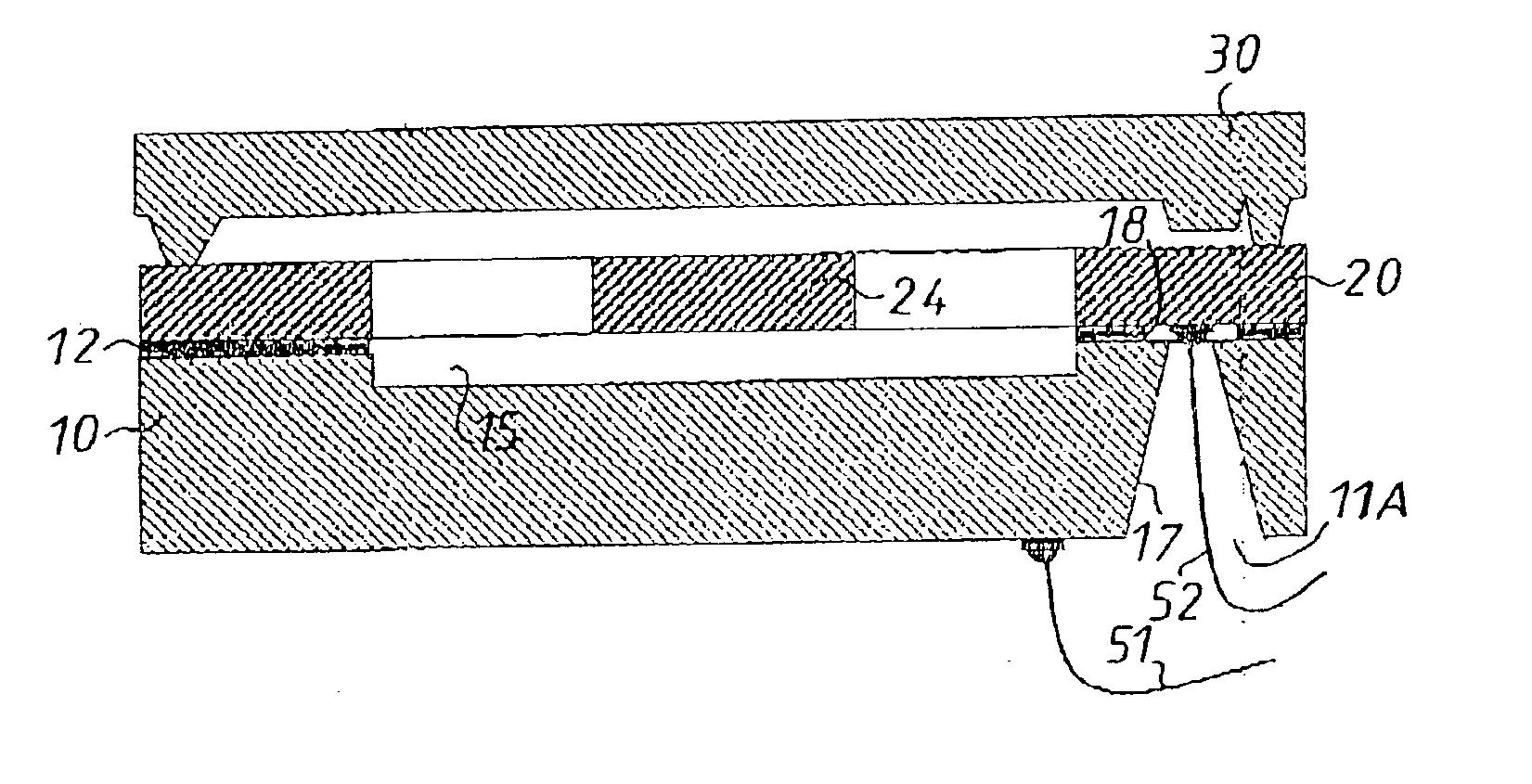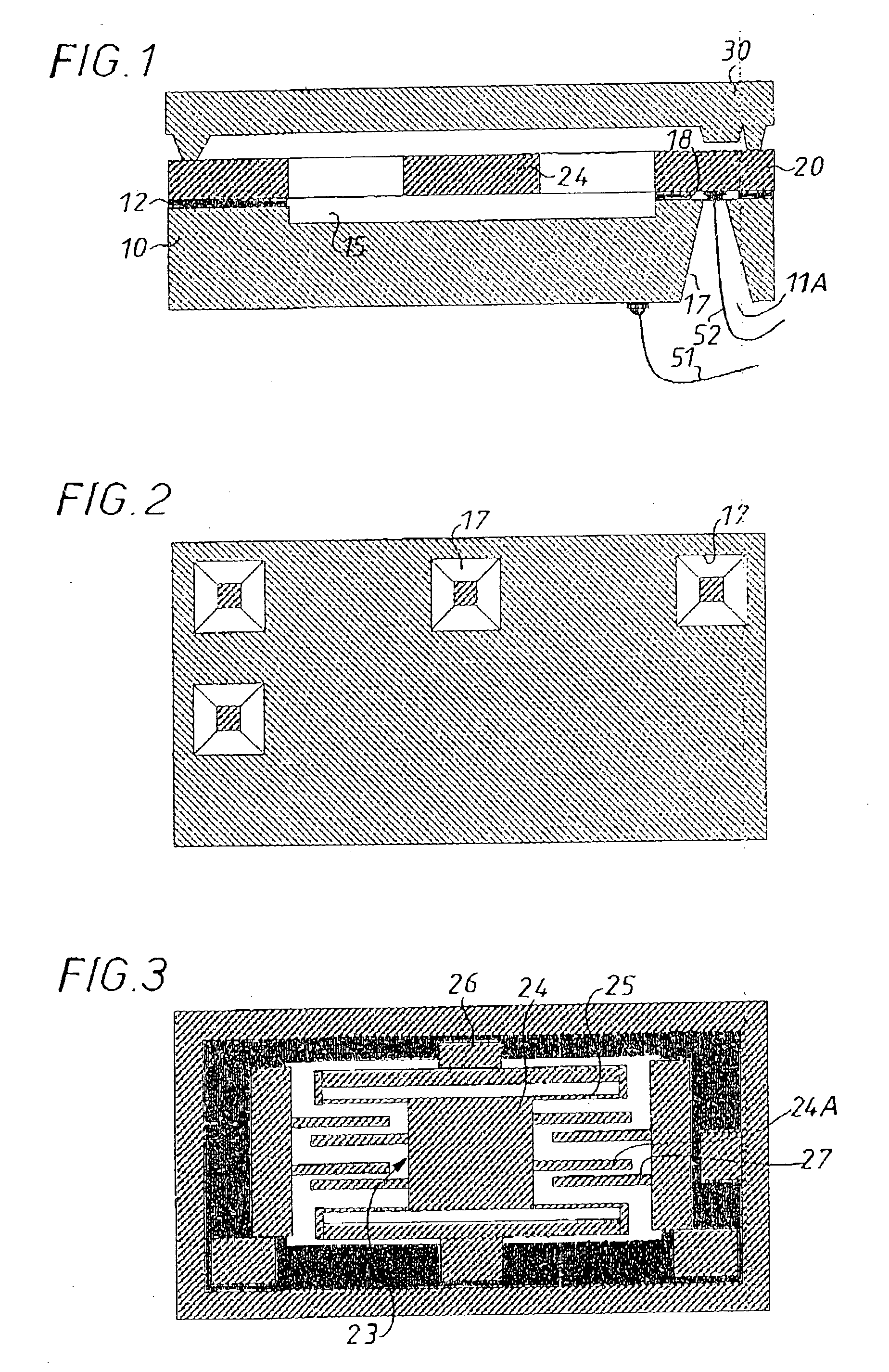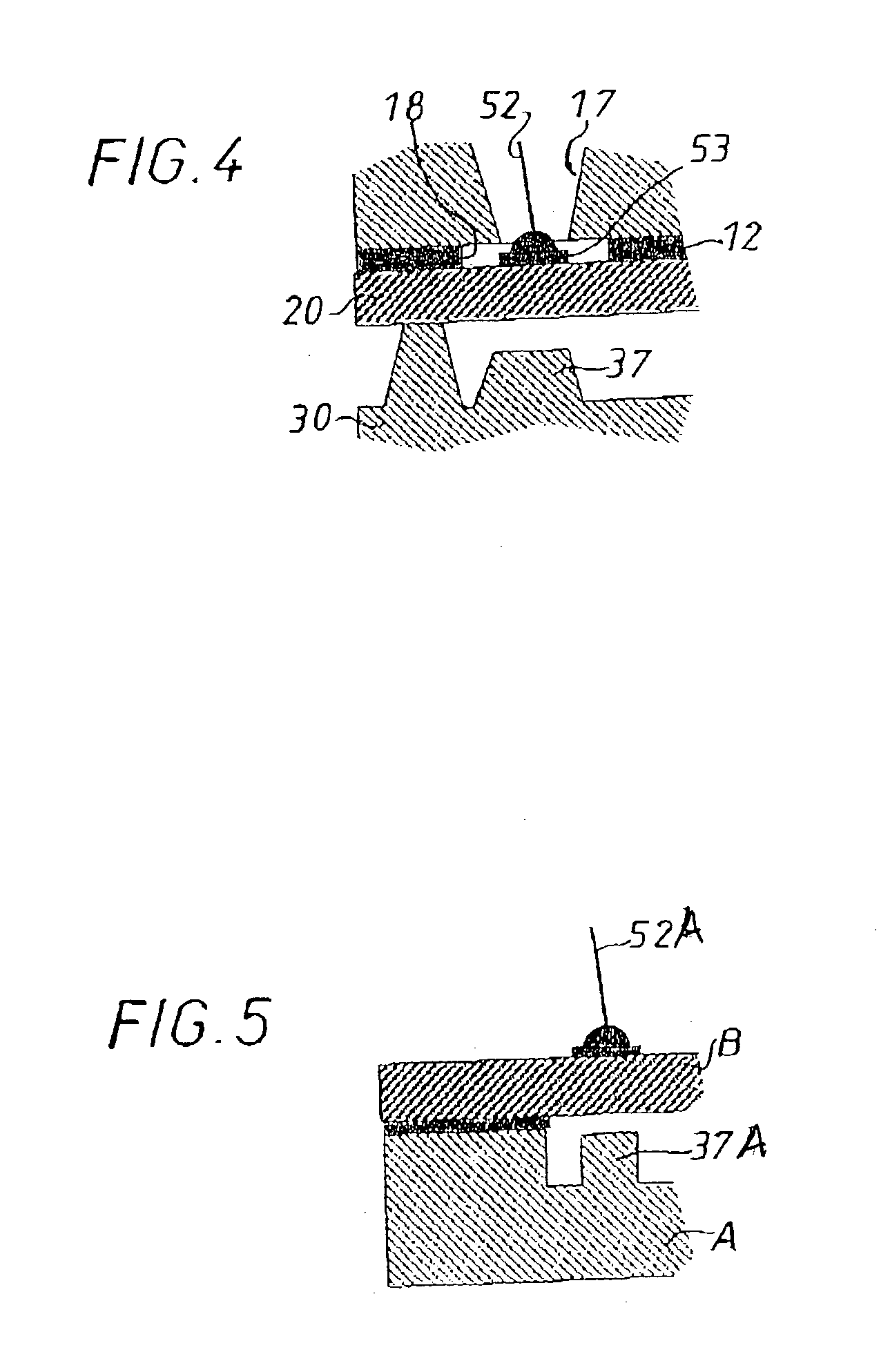Method of reinforcing a mechanical microstructure
- Summary
- Abstract
- Description
- Claims
- Application Information
AI Technical Summary
Benefits of technology
Problems solved by technology
Method used
Image
Examples
Embodiment Construction
[0032] FIG. 1 shows a geophone microstructure approaching completion and having at least the following three main portions: a central layer 20 including a mobile mass 24 sensitive to the accelerations to be detected by the geophone, a support layer 10 that carries the central portion, and a top layer 30, which covers the central layer and defines with the support layer 10, an enclosure that can be evacuated if necessary.
[0033] In a preferred embodiment, each layer is made from a silicon substrate.
[0034] One or more of the substrates can instead be made from a different material.
[0035] Each substrate can initially have the same characteristics and in particular the same thickness, for example 450 .mu.m.
[0036] In a preferred embodiment, the top layer 30 corresponding to the top portion is 300 .mu.m thick.
[0037] However, since, in a geophone, the central layer must in principle have a much smaller final thickness (it is referred to as a thin layer), it is necessary, prior to the specif...
PUM
| Property | Measurement | Unit |
|---|---|---|
| Microstructure | aaaaa | aaaaa |
| Area | aaaaa | aaaaa |
| Distance | aaaaa | aaaaa |
Abstract
Description
Claims
Application Information
 Login to View More
Login to View More - R&D
- Intellectual Property
- Life Sciences
- Materials
- Tech Scout
- Unparalleled Data Quality
- Higher Quality Content
- 60% Fewer Hallucinations
Browse by: Latest US Patents, China's latest patents, Technical Efficacy Thesaurus, Application Domain, Technology Topic, Popular Technical Reports.
© 2025 PatSnap. All rights reserved.Legal|Privacy policy|Modern Slavery Act Transparency Statement|Sitemap|About US| Contact US: help@patsnap.com



